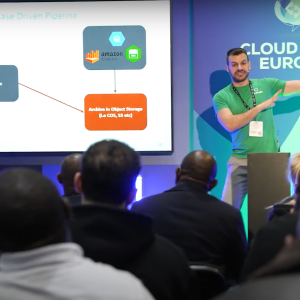
A couple of decades ago, the use of a spreadsheet application was transformative to businesses as they moved from ledger to Excel. At the time this shift re-wrote the rule book for finance and accounting, making work faster, more efficient and manageable.
The next generation of businesses were automatically spreadsheet-native. To them, spreadsheets were necessary but not transformative. Similarly, the iPhone 3.0 was transformative in the early years following its 2007 launch but is table stakes for a digital-native teenager today.
These examples illustrate that the perception of what is ‘transformative’ changes over time. What was once transformative later become pervasive, blending into the fabric of an increasingly technology-driven world.
What then are the truly transformative technologies today? Internet of Things? Virtual and augmented reality? Autonomous vehicles? Yes, yes and yes, but an understated yet tremendously transformative technology that is much farther along in the value realization curve for today’s businesses is Robotic Process Automation (RPA).
Occasionally boosted with cognitive capabilities, RPA is less about replacing humans with bots (shorthand for software robots), but more about allowing the human workforce to focus on activities that truly require human ingenuity and creativity.
Humans are not great at repetitive tasks – we can be slow, we make mistakes and we often get bored. RPA bots can perform repetitive tasks again and again, at speed and with zero errors, to name just two of the many benefits of the technology.
RPA adoption is growing exponentially and is set to accelerate in an almost surprisingly short period of time, so now is the time for organisations to move quickly. Forrester estimates that, by 2021, there will be over 4 million robots doing office and administrative and sales and related tasks, with the market worth $2.9 billion.
The Automation Challenge
Just a few years ago, if you wanted to adopt an automation solution in your business it was a serious developmental challenge that would require a great deal of resources, skills, money and time – often putting it out of reach of even large enterprises.
It would not only require expertise in terms of artificial intelligence and machine learning, but a solid grasp of the applications and processes that you want to automate, and how they have been implemented in the organisation.
Of course, the other issue was that businesses never stop evolving – applications, infrastructure and processes move on, which means that any bespoke automation needed to be able to keep pace with that rate of change. The development and test cycles for bespoke solutions can be tedious and slow. Bespoke in-house solutions can also be put at risk of breaking when updates are made to applications on which the automation relies for data, or to integrate with in other ways.
All these factors increase the costs and risks for enterprises when it comes to bespoke automation, and often means they cannot scale automation initiatives as quickly as they’d like to. And without speed, organizations risk losing their competitive edge.
 An RPA Revolution for the Masses
An RPA Revolution for the Masses
But a big change has happened with RPA coming on the scene which overcomes these problems and makes implementing automation solutions as simple as making a purchase on Amazon and clicking Lego blocks together. Building RPA solutions is now as easy as chaining together those blocks, and customising them, to meet your specific business needs. No longer is it necessary to build a solution from scratch.
The tools available are now easy to use, and very visual, rather than relying entirely on API-driven programming languages. This means that people in the business can work alongside their colleagues in IT to link any applications they are using together, whether it’s Excel, SAP, Oracle, SFDC, or any other local or web application.
This ability to collaborate on the configuration of RPA bots can greatly accelerate the development process as well as the understanding of the problem being solved between those working on the bot, rather than constantly translating between ‘IT speak’ and the language of an internal department.
New bot store marketplaces and platforms are making it a reality for companies at all stages of the digital transformation journey to integrate RPA solutions into their IT infrastructure. If a company is looking to automate a process, task or activity, it can now first go to a bot store and search for pre-built bots that meet its needs, download them, and plug them straight into their business processes.
Bots that have been developed, tested and proven at scale – often by the same companies that build the applications you want to automate. No specialist in-house skills are required, enabling organisations to get started with automation quickly and grow their automation projects more easily and at lower risk.
When changes happen in the business, adapting the RPA is more a matter of customising, or downloading a new bot, rather than embarking on a new development effort. This modular approach means that a company can start with a conservative investment in a small subset of processes and then expand its use of RPA as confidence builds amongst key stakeholders – it won’t take long!
For starters, ask ten employees in your business whether there is a repetitive manual task that they loath. You’ll get ten places that RPA can bring efficiency and free your employees to focus on more rewarding tasks for them, and the business.
RPA has been Democratised
RPA is now being embraced across a wide range of verticals including banking, manufacturing, retail and telco’s to name but a few. It is being used in creative ways to make teams and processes more efficient, bringing about real improvements for companies and their end-customers. These efficiency gains are allowing businesses to refocus the attention of staff on tasks that demand their higher levels skills and creativity, from the call-centre to finance, marketing and product development.
More than anything this revolution is making the technologies of RPA, including business process optimisation, artificial intelligence and machine learning, accessible to companies of all sizes, regardless of their ability to execute new technologies and the size of their budgets. Whatever your industry, there is an opportunity to add automation tools that can make your business more efficient, customer- rather than admin-centric, and competitive.

 An RPA Revolution for the Masses
An RPA Revolution for the Masses




